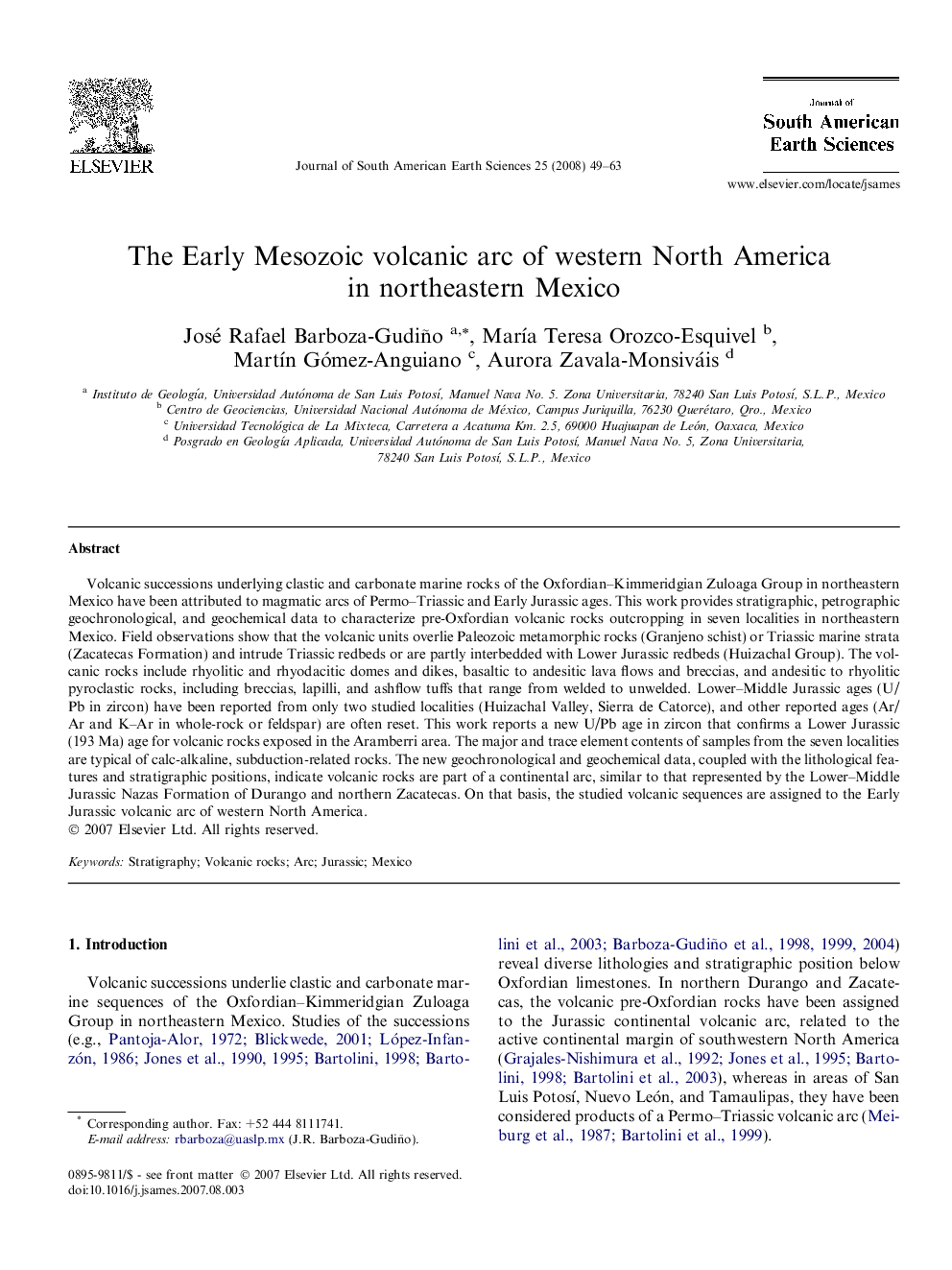| Article ID | Journal | Published Year | Pages | File Type |
|---|---|---|---|---|
| 4682978 | Journal of South American Earth Sciences | 2008 | 15 Pages |
Volcanic successions underlying clastic and carbonate marine rocks of the Oxfordian–Kimmeridgian Zuloaga Group in northeastern Mexico have been attributed to magmatic arcs of Permo–Triassic and Early Jurassic ages. This work provides stratigraphic, petrographic geochronological, and geochemical data to characterize pre-Oxfordian volcanic rocks outcropping in seven localities in northeastern Mexico. Field observations show that the volcanic units overlie Paleozoic metamorphic rocks (Granjeno schist) or Triassic marine strata (Zacatecas Formation) and intrude Triassic redbeds or are partly interbedded with Lower Jurassic redbeds (Huizachal Group). The volcanic rocks include rhyolitic and rhyodacitic domes and dikes, basaltic to andesitic lava flows and breccias, and andesitic to rhyolitic pyroclastic rocks, including breccias, lapilli, and ashflow tuffs that range from welded to unwelded. Lower–Middle Jurassic ages (U/Pb in zircon) have been reported from only two studied localities (Huizachal Valley, Sierra de Catorce), and other reported ages (Ar/Ar and K–Ar in whole-rock or feldspar) are often reset. This work reports a new U/Pb age in zircon that confirms a Lower Jurassic (193 Ma) age for volcanic rocks exposed in the Aramberri area. The major and trace element contents of samples from the seven localities are typical of calc-alkaline, subduction-related rocks. The new geochronological and geochemical data, coupled with the lithological features and stratigraphic positions, indicate volcanic rocks are part of a continental arc, similar to that represented by the Lower–Middle Jurassic Nazas Formation of Durango and northern Zacatecas. On that basis, the studied volcanic sequences are assigned to the Early Jurassic volcanic arc of western North America.
